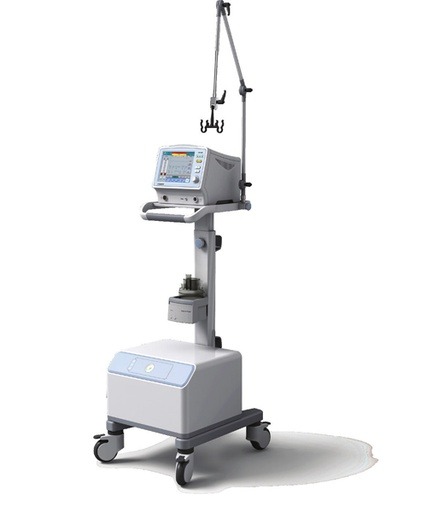Respiratory support is a cornerstone of care for infants and children with critical conditions. Whether it's preterm neonates with underdeveloped lungs or older children with complex illnesses, ventilators play a vital role. This article delves into the intricacies of infant ventilators, neonate ventilators, and pediatric ventilators, answering common questions and providing valuable insights for parents and caregivers.
Introduction to Pediatric Ventilation
Every year, an estimated 15 million babies are born prematurely, with many requiring respiratory assistance. Ventilators designed for infants and children differ significantly from those for adults, catering to smaller, more delicate lungs.
For caregivers, understanding how ventilators work and when they are needed can be daunting. This guide simplifies these complexities, empowering readers to make informed decisions about their child’s care.
1. Types of Ventilators: Infant, Neonate, and Pediatric
What’s the Difference?
- Infant Ventilators: Designed for babies up to 12 months. They provide gentle support to minimize lung injury.
- Neonate Ventilators: Specifically for preterm or newborn babies. These ventilators are highly sensitive, catering to fragile and underdeveloped lungs.
- Pediatric Ventilators: For children beyond infancy, offering broader ranges in settings to accommodate larger lung capacities.
Key Features Comparison
| Feature | Infant Ventilator | Neonate Ventilator | Pediatric Ventilator |
|---|---|---|---|
| Patient Age Group | Up to 1 year | Newborn to 1 month | 1 year to adolescence |
| Sensitivity | High | Very High | Moderate |
| Size Adaptability | Small lungs only | Preterm lungs only | Wide range |
2. When Is Ventilation Necessary for Children?
Ventilation is a life-saving measure, but it's only used when absolutely necessary. Common scenarios include:
- Respiratory Distress Syndrome (RDS): Affecting 60% of premature babies born before 28 weeks.
- Pneumonia or Infections: Severe infections that compromise lung function.
- Chronic Lung Diseases: Such as bronchopulmonary dysplasia in neonates.
Fact Check: In a 2023 study published in The Lancet, nearly 1 in 10 neonates admitted to NICUs worldwide required mechanical ventilation.
3. How Do Pediatric Ventilators Work?
Pediatric ventilators mimic the natural breathing process:
- Supply Oxygen: Delivering oxygen at controlled rates and pressures.
- Remove Carbon Dioxide: Ensuring effective exhalation to prevent CO2 buildup.
- Adjustable Settings: Tailored for age, weight, and medical condition.
Real-Life Application
In neonatal care, modes like SIMV (Synchronized Intermittent Mandatory Ventilation) are often used to synchronize with the baby’s natural breathing efforts, reducing dependency over time.
4. Risks and Benefits of Using Ventilators in Children
Benefits
- Restores oxygen levels quickly.
- Prevents organ damage caused by hypoxia.
- Supports recovery during critical illness.
Risks
- Lung Injury: Barotrauma from prolonged high-pressure ventilation.
- Infections: Ventilator-associated pneumonia (VAP) occurs in 9%-27% of cases.
Case Highlight: In a study conducted in 2021, neonates on high-frequency oscillatory ventilators showed a 30% lower risk of lung injury compared to traditional methods.
Have questions? We offer free consultation.
5. Advancements in Pediatric Ventilation Technology
Technology is constantly evolving to improve outcomes:
- AI-Powered Ventilators: These adjust settings in real-time based on patient needs.
- Non-Invasive Ventilation (NIV): Reduces complications by avoiding intubation.
- Portable Ventilators: Allowing children with chronic conditions to receive care at home.
Insight:
Dr. Jessica Collins, a neonatologist, notes, “The integration of AI into neonatal ventilators is revolutionizing personalized care, ensuring safer and more efficient respiratory support.”
6. Parental Guidance: What to Expect During Ventilator Use
At the Hospital
Parents often feel overwhelmed seeing their child on a ventilator. Here’s what to expect:
- Frequent monitoring by NICU staff.
- Alarms that signal adjustments needed in ventilation.
Transition to Home Care
For long-term ventilator-dependent children:
- Ensure proper training in ventilator use and troubleshooting.
- Establish regular follow-ups with respiratory therapists.
7. Frequently Asked Questions
Q: Can ventilators harm my child’s lungs?
A: While prolonged use can pose risks, modern ventilators are designed to minimize these. Physicians constantly monitor for potential complications.
Q: How long can a child stay on a ventilator?
A: Duration varies, from days in acute cases to months in chronic conditions.
Q: Are there alternatives to ventilators?
A: Yes, non-invasive methods like CPAP (Continuous Positive Airway Pressure) may be considered.
Conclusion
Ventilators for infants, neonates, and pediatric patients have come a long way, offering life-saving support to those who need it most. Whether navigating the NICU or transitioning to home care, understanding the options and technology behind these devices empowers parents to make informed decisions.
Remember: The best outcomes arise from open communication between caregivers and medical teams.
CTA:
If you found this guide helpful, share it with others who might need this information.
See also:
The Essential Guide to Infant Radiant Warmers: Benefits, Safety, and Trends
→Click here to learn more about our ventilators
or
